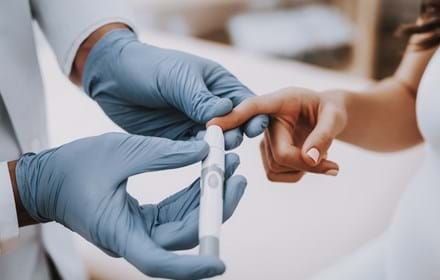
The practical implementation of diabetes technology - Day Three Blog
DRWF Research Manager Dr Eleanor Kennedy reports from the third day of the 13th International Conference on Advanced Technologies and Treatments for Diabetes in Madrid, Spain.
Day Three at the Advanced Technologies and Treatments for Diabetes (ATTD) conference and I am now fully conversant with the wild taxi driving that gets me from my hotel to the conference centre and back again every day!
Regardless of the time, the roads are congested and, with an aggressive chorus of honking horns and what I can only assume are a battery of Spanish swear words, we careen along weaving into the tiniest of spaces in the lines of traffic and barrelling round corners on what feels like just two wheels!
It is always an adventure and, in fairness to my Madrileño taxi drivers, I always arrive in once piece… albeit with my adrenaline levels slightly higher than normal!
One of the highlights of today’s programme is a look at the ATTD annual yearbook.
Developing technology and innovations in treatment of diabetes
The ATTD Yearbook addresses a growing interest in the development of new and advanced technologies and devices for the treatment of diabetes which results in numerous manuscripts being published in medical journals relating to these topics.
It reflects innovations in the treatment of diabetes, combining a selection of the most relevant published data from this very broad field with critical review of the most important articles, selected by key opinion leaders.
Over 90 minutes we are treated to presentations on 13 of the chapters – we’re moving at the same speed as the taxi drivers on the roads outside!
But the concept is an interesting one. Each speaker is allowed to highlight just three of these chosen papers in just seven minutes!

Let’s take a look at an example
Practical implementation of diabetes technology – a subject right at the beating heart of ATTD.
The three papers chosen highlighted all looked at different aspects of this.
The first – on the thorny subject of reimbursement – maps reimbursement for insulin, glucose meters, insulin pumps and continuous glucose monitoring (CGM) in 29 European countries and shows that insulin and test strips are mostly covered but that there is still some diversity in coverage for insulin pumps and CGM.
Overall the trends are positive for reimbursement, but inequalities still exist.
And yet, although we know that CGM is highly cost effective, there is clearly a need for much more research in order to influence payors.
The second – on technology uptake and outcomes – reports on data collected from the Type 1 Diabetes Registry in the United States.
Since 2010, CGM use has increased exponentially; a six-fold increase in overall use and a more than 10-fold increase in use in those aged under 18. However, the results found that glycaemic control did not improve at the same time.
The report said that just 17% of those aged under 18 achieved the American Diabetes Association’s recommended HbA1c levels of less than 7.5% (<53mmol/mol) and around 21% of adults achieved these targets.
These findings led the authors to conclude that technology is important but, apparently, not sufficient for many of the people using the technology.
Structured education
The third paper focussed on the importance of structured education and automated decision support.
Structured education in several trials that reported last year demonstrated that it could decrease hypoglycaemia whilst simultaneously alleviating levels of diabetes distress in people using CGM. And automated decision support could be a tool of use for both clinicians and people with diabetes and, in the future, be used in conjunction with both CGM data and insulin pumps to achieve insulin dosing.
As we walk though all of the chapters of the book at a rapid pace, it is interesting to see how the last 12 months have moved the research in so many areas forward and how each piece of the jigsaw dovetails with other pieces to give us a more complete picture.
From here I wander to a related session. The International Society of Paediatric and Adolescent Diabetes session on technology needs in paediatric diabetes.
There are clearly still unmet needs, a definition that loosely covers a lack of access to technology and an inability to reach the recommended targets for HbA1c or time in range or other metrics. And this unmet need is often greatest in minority groups.
In the Middle East and Africa utilisation of diabetes technology is increasing but is markedly variable across the region due to different levels of income amongst countries.
Funding remains a major obstacle, but a wide-ranging array of other issues are raised like the requirement for simplified technology, continued patient motivation and education for local healthcare professionals and, importantly, issues of data security.

It’s not just an issue in other parts of the world
In a study from the UK, black and mixed ethnicity children have an increased risk of poor glycaemic control at one-year post-diagnosis compared to white children.
Factors affecting the lower penetration of technology in minority groups can include socioeconomic status, family background, cultural beliefs and conception of disease and linguistic barriers.
While disappointing, it is heartening that these international issues are being addressed, discussed, debated and, hopefully, solved by a truly international audience.
Visit the ATTD website
Support DRWF by making a donation here
Find out more about DRWF-funded research here
Find out more about DRWF fundraising here
For latest update follow DRWF on Facebook, Instagram and Twitter
To receive the charity’s latest bulletins as they become available, please sign up here
Read DRWF diabetes information leaflets here
Join the Diabetes Wellness Network here
I would like to make a regular donation of
I would like to make a single donation of
There are lots of ways to raise money to support
people living with all forms of diabetes.
Bake, Swim, Cycle, Fly ... Do It For DRWF!
Fundraise with us
Recent News


